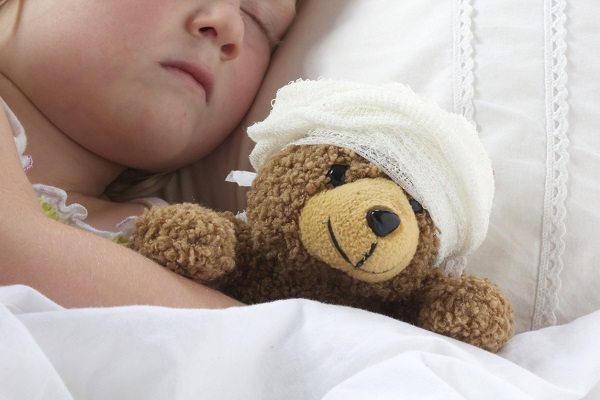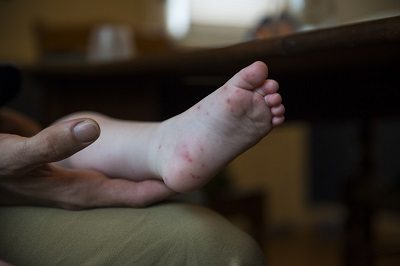It’s still that time of year, when summer is on its way, but there are still a few frosty mornings and pesky illnesses to overcome before we can really start getting out the t-shirts. One of these illnesses is Hand, Foot and Mouth Disease, which appears to be doing the rounds in creches and schools right now. Not to be confused with Foot and Mouth disease, which ails cows, sheep and pigs, Hand, Foot and Mouth is a common childhood illness that spreads like wildfire through crèches, pools and playgrounds. Young children are most likely to be infected by it before the age of five.
Hand, Foot and Mouth is a reasonably mild viral infection, so there’s not much to do other than to let it run its course. Unfortunately because the disease is caused by a number of different viruses, you can still get infected with Hand, Foot and Mouth even if you’ve already had it. No chickenpox trick with this one.
Symptoms
The symptoms for Hand, Foot and Mouth can be tricky. Your child may have one or two of the symptoms but not the other, and even when all their symptoms have disappeared, they may still be carrying the virus and be contagious to others. However, they are most likely to be contagious within the first week of illness when they are presenting a high temperature, sore throat, rash, blisters on the hands, feet, or buttocks, ulcers around or inside the mouth or on the tongue, a reduced appetite and a general feeling of being unwell.
Treatment
As Hand, Foot and Mouth disease is a viral infection, antibiotics or special creams won’t help to alleviate symptoms any quicker than just letting the virus run its course. But if your child is in discomfort, there are plenty of over the counter remedies to help your child while they get over it. Painkillers such as paracetamol and ibuprofen can relieve any pain or high temperature, but make sure to consult your pharmacist about the correct dosage. Other than that, the best advice is plenty of rest and lots of fluids to help relieve a sore throat.
As the child can be contagious for up to six weeks after symptoms have disappeared there’s no right answer as to when the child should go back into the public. If your child attends crèche or school consult with the staff and your doctor to see when your child can return.
Prevention
With children back in school or crèche, it can be hard for them to avoid catching little germs and bugs. The mouthing instinct doesn’t help this at all, but there are some things you can do to help your child avoid catching a bug this season. As the virus can be spread through excretion of nasal fluid, saliva, urine or faeces encouraging hand washing is a must. It should be done military style after using the toilet, after wiping a runny nose or a dribbly chin, after sneezing or coughing, and before preparing and eating food.
While a child has blisters, they should not share face cloths or tissues with other children. Any towels or cloths that become soiled should be washed on a hot cycle. Try to keep your child from putting any objects into their mouth and wash toys with warm soapy water to get rid of any harmful bacteria growing on them.
Complications
In rare cases Hand, Foot and Mouth disease can develop into viral meningitis. Not to be confused with bacterial meningitis, the viral strand usually exits the system in about two weeks. Symptoms include high temperature, vomiting, headache, neck stiffness and a dislike of bright lights. However, it is best to consult with your medical care team or GP to see if your child needs to make a trip to the hospital.
In very rare cases Hand, Foot and Mouth disease can develop into encephalitis. Encephalitis is an infection that causes brain tissue to swell and become inflamed. Early signs are flu-like symptoms including fever, vomiting, drowsiness, seizures and a dislike of bright lights. Consult with your medical care team or GP immediately if you think your child has developed encephalitis.
For more information about Hand Foot & Mouth, visit the HSE website
Read all about another common childhood illness, Slapped Cheek Syndrome
maternity&infant
Originally posted 2017-04-24 08:30:08.










